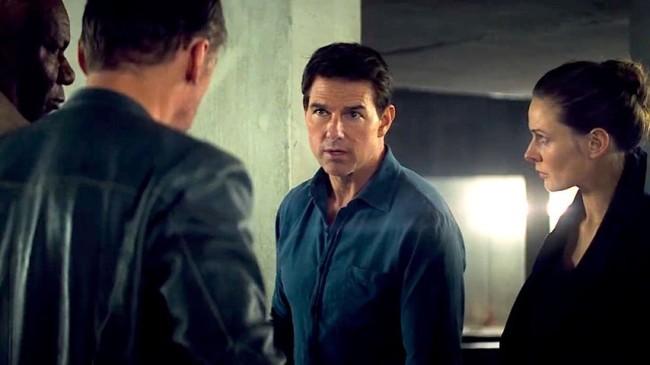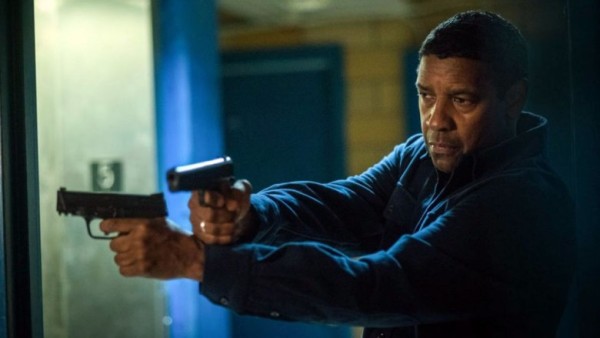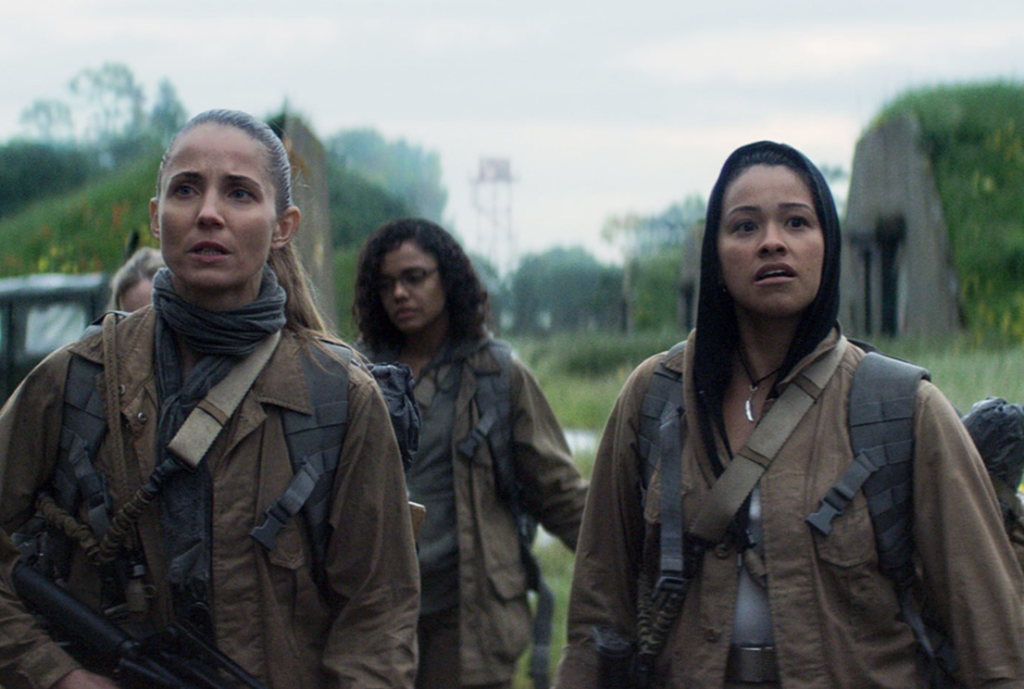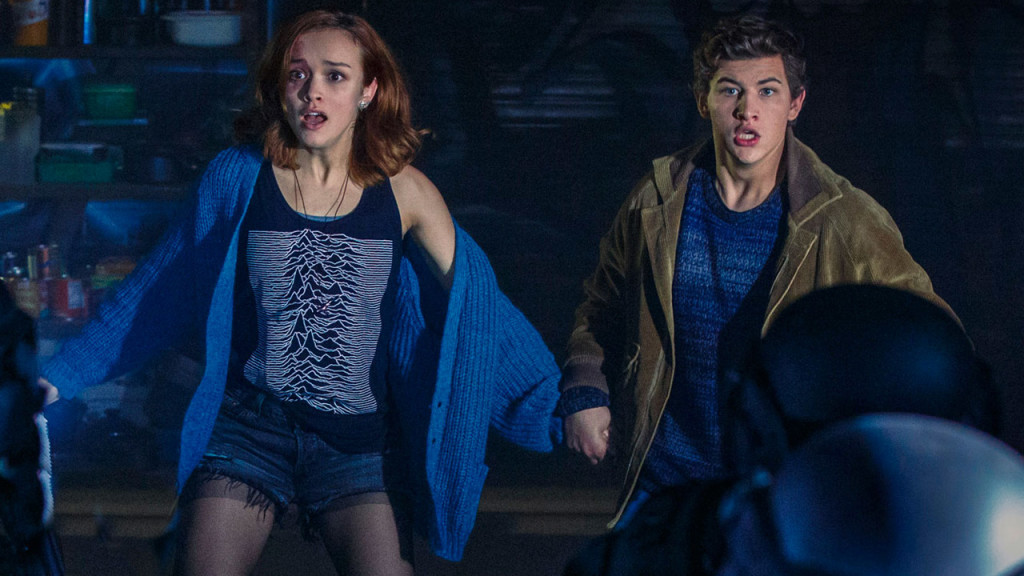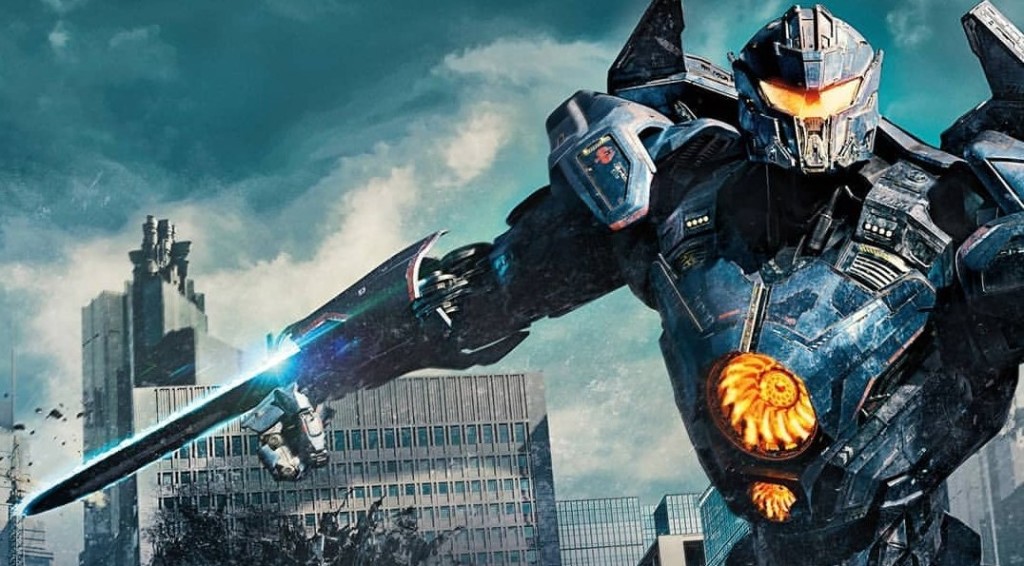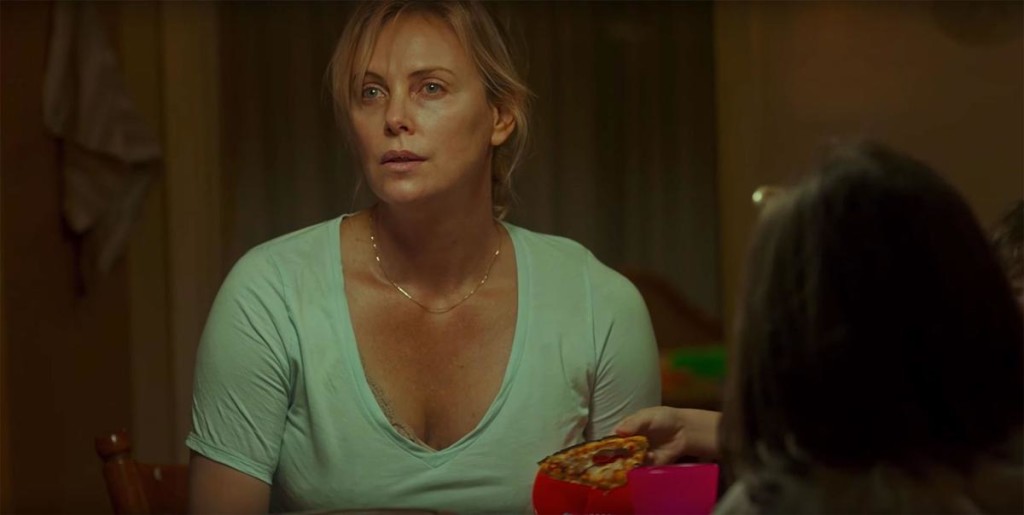Genre: 1 Hour TV Drama
Premise: An anthology series that is said to take the entirety of the Stephen King universe and tell new original stories within that universe, with the occasional assist from known King characters.
About: Castle Rock is the long awaited “Stephen King Universe” show that JJ Abrams brought to Hulu. The show is being spearheaded by Sam Shaw and Dustin Thomason, who created the ambitious but ultimately canceled, “Manhattan.” JJ Abrams was said to be a big fan of the show and had wanted to work with Shaw and Thomason. So when they pitched him this idea, he was immediately on board. The show debuted last week.
Writers: Sam Shaw and Dustin Thomason (based on Stephen King’s books)
Details: 55 minutes
I’ve been looking forward to this show since the day they announced it. With “It,” Hollywood finally figured out how to do Stephen King horror right. While King can be goofy and weird, his adapted material works best when it errs on the dramatic side. That’s where JJ’s taken his cue with Castle Rock – a serious jaunt into the Stephen King universe. In fact, I’d call this trip Fargo-Adjacent. Not a bad tone to set your TV show to.
However, I’ve been down this road before with JJ and Hulu. 11/22/63. I thought that show was going to be amazing. But by the fourth episode, I felt like I was watching concrete harden. Which is ironic since that show was about as solid as soft serve ice cream. In retrospect, I realized the concept was flawed. You’re sent back in time to stop the Kennedy Assassination but you arrive two years prior to the assassination. So you have to sit around and wait for two years? Talk about anti-urgency.
But JJ being the genius he is, he knew how to suck me back in. Begin Castle Rock at Shawshank? Shawshank as in the prison in the best movie ever made? Well, duh. Can I be admitted as a prisoner? And in double-dose JJ fashion, we meet the warden of Shawshank as he drives his car off a cliff while hanging himself at the same time. I know, right? wtf???
We quickly learn why he’s done this. It turns out the warden was keeping a kid in a cage in the basement of Shawshank. When that kid, now a young man, is rescued, he says two words, “Henry Devers.” Henry Devers? Who the hell is Henry Devers?
Henry Devers, it turns out, is a lawyer who grew up in Castle Rock. He comes back to town to learn why this tortured kid is asking for him. And that’s when we learn Henry has his own complicated past. When he was a kid, he disappeared for two weeks during the dead of winter, with temperatures in the negatives. Nobody could’ve survived that. Yet Henry shows up two weeks later in the forest, completely fine, with no memory of what happened.
As we make our way to the end of the pilot, the focus is placed on the weird kid who was rescued from a cage. The word ‘creepy’ doesn’t do him justice. And right now, no one knows what to do with him. I mean, he doesn’t even have a name. Then, without warning, all the power in the prison goes out, and when it comes back on, he’s no longer in his holding room. Cut to black.
This one was a doozy. It was awesome in parts. Slow in others. All in all, it made me a believer, but not without some reservations.
For starters, there’s the “coming back home” template for a show. Yes, it’s used a lot. But it’s used a lot because it works. You may note that it’s the template for the new HBO show, Sharp Objects, as well.
The reason this format works is because you’re immediately dropping your hero into a world of unfinished business. You have to remember that TV shows are about character. Character development, character struggle, character relationships. Way more so than movies. So imagine, then, that you can place a character in a situation where you have 5-10 unresolved situations with other characters right away. Your show is off and running within minutes. That’s what the “come back home” template gives you.
Castle Rock combines this with what JJ does best – MYSTERIES. Every pilot needs to set up a series of mysteries. Somewhere between 1-4 in the opening episode. If it’s one, it needs to be really powerful. If it’s four, you can spread the wealth a bit. Also, the type of mystery will vary depending on the genre. If you’re writing a legal show, the mysteries aren’t going to be as intense as if you’re writing a sci-fi show or a show like Castle Rock.
Now you may say, but the internet told me mystery boxes were bad, Carson! There’s no doubt that mystery boxes can get you in trouble. If all you’re doing is leaving a trail of mystery boxes with no idea of what’s inside, expect to pay the price. But as long as you have a plan for each mystery box, you’re good. And even for those of you who are mystery box adverse, you can’t avoid it in television. You need to give the audience a reason to keep watching the show and mystery boxes are one of the most effective ways of doing so.
Here, we have two big ones: Who is this kid that’s been kept in a cage for the last 15 years? And what happened to Henry Devers all those years ago when he disappeared for two weeks?
Those two mysteries hooked me, especially the kid in the cage.
But I do have a problem with the show, which is that it’s not taking advantage of the “come back home” format enough. Nobody seems to know Henry Devers outside of his mom. They know his story – how he disappeared. But he doesn’t seem to have any relationships with people. It’s almost as if he left town the day after he was found in the woods.
As a result, Henry Devers feels detached from the world surrounding him. We’re not learning enough about this person. Contrast this with Sharp Objects, which has its main character, Camille, coming back home to investigate the disappearance of a young girl (that’s the mystery driving that show). Camille is constantly running into people she knows, old friends, friends of her mom, acquaintances. This allows us to establish unresolved relationships that can now become the engines for each episode.
Castle Rock, I think, wants to wrap its main character in a mystery box. And I’m not sure that’s a good idea. A mystery box arriving in a mystery box? We need something to ground the story, something solid to latch onto. If everything is floating around us, just out of reach, we get frustrated and want to go home.
With that said, I’m still intrigued. The writers have definitely captured the essence of the King universe. And I’m curious what they’re going to do with some x-factors here. Such as the fact that Bill Skarsgård, our “boy in the cage” also happens to play Pennywise the Clown in “It.” Are they going to connect the show with the “It” movies? That would be cool. Or that Sissy Spacek, who played Carrie in Carrie, is Henry Devers’ mother. Might there be a surprise reveal there? This is JJ, remember. And don’t get me started on how cool it is to see Shawshank again. The more time we get to hang out there, the better.
So they’ve got my attention. I’m watching the second episode now and enjoying it. At the very least, this feels like it will surpass 11/22/63.
[ ] What the hell did I just read?
[ ] wasn’t for me
[xx] worth the read
[ ] impressive
[ ] genius
What I learned: The “Come Back Home” template is one of the strongest templates there is for a television show. Just make sure that you have 4-5 unresolved relationships set up and ready to go as soon as your hero touches down.
Genre: Action
Premise: (from IMDB) Ethan Hunt and his IMF team, along with some familiar allies, race against time after a mission gone wrong.
About: Mission Impossible Fallout is, I believe, the sixth film in the franchise (don’t quote me on that). Christopher McQuarrie, who directed the previous installment, is back in the writer-director chair again. The film scored 61 million at the domestic box office, which is the 9th best opening this year. Not great but Mission Impossible always does well globally and this iteration did especially well with the critics, scoring a 97% on Rotten Tomatoes.
Writer: Christopher McQuarrie (based on the TV series by Bruce Geller)
Details: 150 minutes
Let me start by saying there is no movie I enjoy going to more than a Mission Impossible movie. Why? Because on the way there, you get to hum… “duh duh duhduh duh duh duhduh dadadaaaaaaa dadadaaaaa DUH DUH DUH-DUH DUH DUH DUH-DUH.”
There’s no score you can hum that makes you happier. Try it. I’m serious. Start humming the Mission Impossible theme. Try not to feel happy. It’s impossible, right? Mission impossible!
So everyone’s saying this is the best Mission Impossible ever made. It’s a game-changer. It’s the “Dark Knight” of the series. Before we get into all that, let me tell you what I like about the Mission Impossible franchise. I like Tom Cruise doing his own stunts. I like the silly mask stuff. I like the interplay between the team. I like the gadgety stuff. For example, I like that scene from Mission Impossible 4(?) where they’re sneaking down a hallway with a fake projection empty hallway.
Surprisingly, the thing I like least about Mission Impossible is the action set pieces. I’ll get to why in a second. But first let’s break down the plot. Or at least try to.
Ethan Hunt’s mission, which he chose to accept, is to find three portable nuclear bombs before they can be detonated. He goes to British Lady Gaga to buy the bombs, only to find out that she’s not selling. She’s exchanging. She first needs Ethan to recover a mangy-bearded guy in police custody who I think was the villain from the last movie.
Ethan gets his team together and successfully extracts Mangy Beard, who we find out is working for a mysterious guy named John Lark who nobody’s ever met. Accompanied by new team member, Henry Cavill (Superman), the team prepares to exchange Mangy for the nukes. But the CIA, who think Hunt is a bad guy now for some reason, put an end to this rogue mission, which results in a shootout and Mangy Beard escaping.
It is believed that Mangy Beard, the mysterious John Lark, and these nukes, will be detonated at a remote smallpox lab in Kashmir. The resulting explosion will spread smallpox to the highly populated surrounding countries of China, India, and Pakistan, and basically end the world. Ethan Hunt needs to get there in time to stop it all. But can he???
I don’t know why it’s mission impossible for me connect with these big action spy movies. I really want to. I walk into each one hoping, praying, this will be the day. But it never happens.
Upon reflection, I think I need a STRANGE ATTRACTOR to my popcorn movies. I need Godzilla. I need Jedi. I need a clown that eats children. Straight up realism doesn’t work for me. It feels too basic, too standard. That’s the lens I’m viewing Mission Impossible and James Bond and The Bourne Franchise through. It’s a bunch of run-of-the-mill (albeit well produced) action scenes wrapped inside an overly complicated plot that I can never keep up with.
That’s correct. Yet again, I have no idea what’s going on. And in this iteration, my confusion started early.
We get a scene where Ethan Hunt and his team go to buy the nukes from the bad guys. Before the purchase can be completed, someone starts shooting from the shadows, killing all the bad guys but no one in Ethan’s crew. At the end of the scene, there’s a standoff where one of the shooters is holding Ving Rhames hostage. Ethan kills the man, runs over, and after everyone confirms that Ving Rhames is okay, they look behind them and realize that the nukes are gone.
Wait a minute wait a minute wait a minute. Who stole the nukes? Was it one of the surviving members of the group that brought the nukes? Or was it a third party? If it was a third party, why did they only kill the bad guys? You are literally leaving the most capable person on the planet, the person most likely to be able to track you down and kill you, Ethan Hunt, alive. That makes zero sense.
But the biggest fault of the plotting by far is when the CIA thinks Ethan Hunt is John Lark. I mean come on. Really? This guy who’s been saving the world for the last 20 years, the CIA all of a sudden thinks he’s a bad guy? There’s no way that would happen. It’s such a forced false plot point, it borders on embarrassing.
And then there’s those action set pieces.
Actually, before we get to that, let’s talk about Ethan’s super-power. When, exactly, did Ethan Hunt develop a power that allows him to speed through any intersection at 100 miles an hour and always be able to time it so that he never gets hit by six lanes of cross-traffic?
I get it if this happens once. You look back. “Phew. That was lucky.” But he does it over and over again. The reason this is relevant is because the whole trick with creating great chase scenes is to milk whether the hero will get caught. If your hero has a cheat code where he can zip through six lanes of cross traffic whenever he wants to ditch his pursuers, we know the movie will always save him whenever he gets into any real trouble. There’s zero sense of doubt.
Writers are supposed to do the opposite of this. You want to make things HARD for your hero, not easy. Remember what the Coen Brothers do. They write their hero into an impossible corner, then hand it to the other brother, who has to figure a way to get the hero out of it.
Back to the action scenes. And here’s where the lack of a strange attractor affects my viewing experience most. I’ve seen 95% of the these action set pieces before. Wasn’t there a big motorcycle chase in the last movie? Weren’t motorcycle chases a big part of Mission Impossible 2? Sure, there were some fun moments like Tom Cruise riding the wrong way around the Arc De Triumph. But the problem with real-world action is that it’s… well, real world. Everything real-world we’ve seen before. On the flip side, I haven’t seen a talking raccoon standing on top of a Tree-Man shooting a machine gun. That’s why I go to the movies. To see stuff I haven’t seen before.
The Mission Impossible action set-piece that sticks out most occurs in JJ Abrams MI (no surprise there). It takes place on an isolated stretch of ocean highway with Tom Cruise running from a drone that’s shooting missiles at him. There’s actually some inventiveness to this sequence. We’re isolated. We’re in a unique setting. We’re trapped. The odds are insurmountable (man with nowhere to run vs. military drone). In Christopher McQuarrie’s Mission Impossible movies, it’s always a chase through a city that we’ve seen a million times before.
Mission Impossible needs to get back to its roots. What’s the defining image of this franchise? When I say “Mission Impossible,” what is the first thing you think of? It’s Tom Cruise, clad in black, arms and legs spread eagle, being held one inch from a white floor. Six movies later and that’s still the image we go back to. Why? Because back then, it was more about being clever than, “WHAT COOL STUNT CAN WE DO HERE!?” It was more about coming up with a cool fun plot than, “I WONDER IF TOM CRUISE CAN JUMP OFF THE EIFEL TOWER ON A SEGWAY.” That white room heist sequence cost 1/100th of one of these car chases yet it was a hundred times more impactful.
Unfortunately, Mission Impossible continues to fall short for me. It’s not as realistic as James Bond. It’s not as fun as Fast and Furious. It’s basically a playground for Tom Cruise to do a real world stunt they can build a marketing campaign around. I was bored.
[ ] What the hell did I just watch?
[x] wasn’t for me
[ ] worth the price of admission
[ ] impressive
[ ] genius
What I learned: Major plot points must pass the eye test. While I liked that they tried to do something different with the climax – blowing up a nuclear bomb near a small pox lab so the small pox would spread to surrounding countries – it doesn’t work because it doesn’t pass the eye test. The eye test is what the audience sees. We see a desolate snowy mountain in the middle of nowhere. No matter how destructive you sell us on this situation, if we can’t SEE how this would kill millions of people, we’re not buying it. I didn’t once buy that this was going to affect anyone in China or India or Pakistan. Those nations felt a million miles away from me in these mountains. This is a common writer-director mistake. They liked this location as a set piece so much that they back-engineered the plot to get it into the movie, as opposed to allowing the climax to evolve organically from the story.
NOTE: It looks like Disqus stopped allowing comments on this thread at 4:00pm PT. No idea why. Probably just another dumb Disqus glitch. Just wanted everyone to know that I’m not deleting any comments.

You know what time it is. It’s time to face up to your screenwriting sins! We’re almost seven months into 2018. Have you finished your two scripts yet? Have you finished one? Use this post to stay accountable. Tell us where you’re at. If you haven’t been as productive as you’d hoped, give us your reasons so we can prove to you that they are, in actuality, excuses. Ahh, but seriously. Let us know what’s going on so we can encourage you to keep at it. Screenwriting has always been a marathon, not a sprint. — By the way, Monday I will be reviewing Mission Impossible and Tuesday, Castle Rock. I’ve been desperately looking forward to Castle Rock (JJ Abrams and all). Mission Impossible, not so much. I can tell you that I loved one and disliked the other. But which one was which? Tune in this week to find out. :)
Genre: Dram/Sci-fi
Premise: Sway, a talented high school pianist with a hard home life, gains the power of mind control but must strengthen it if she hopes to escape the clutches of her abusive, drug-pushing cousin.
Why You Should Read: Hey, name’s Brittany! I may not comment much but I read SS everyday. Been reading, absorbing, mostly writing. I come here with a script I’ve been working on for a little while. I’ve always wanted to write a “superpower” story set in the real, real world with very personal stakes for the main character rather than world altering ones. There’s very little special effects and no over the top sci-fi jibber jabber. It’s pretty contained and written with a low budget in mind. Chiefly, this is a story about how abuse victims grow defense mechanisms to help cope with their abusers. In this case, the victim gains an actual superpower. I look forward to any helpful feedback from Carson and the awesome SS community!
Writer: Brittany Lamoureux
Details: 88 pages
“Sway” comes along at just the right time as I’m getting in touch with my dark side this week!
I checked out Gillian Flynn’s HBO show, “Sharp Objects,” yesterday, and tomorrow I’m watching the first episode of Castle Rock on Hulu.
“Sway” has echoes of Donnie Darko in its description. Let’s see how it stands up to that cult classic.
16 year old Sway lives in a trailer park with her alcoholic mom and young sister. All of her downtime is spent working for her abusive older cousin, Rocky, who’s responsible for producing the park’s only source of income, oxycodone.
The only escape Sway has is school, particularly band class, where she gets to play piano. It’s in this class where she meets Dylan, a new kid who she quickly falls for. When Sway is chosen as one of a dozen kids to play at Carnegie Hall in a few weeks, both her and Dylan are ecstatic.
But Sway has a horrible secret. Every night when she goes to sleep, she’s visited by a horrifying shadowy monster, a monster who roughs her up and suffocates her, leaving her mentally and physically exhausted every morning.
One night during an attack, however, a black void opens up in the ceiling, momentarily distracting her from the attack. Later, she finds out that this void has given her a power, the power to manipulate people with her stare.
The power works on everybody except the most strong-minded. Unfortunately that means that the only person she wants to use the power on – Rocky – she can’t. Which sucks because Rocky refuses to sign off on Sway going to Carnegie Hall. Or hanging out with Dylan.
Dylan gets the idea that all Sway needs to do is practice her power and soon she’ll become strong enough to mind-control Rocky. Afterwards, the two can run off to New York, pursue Sway’s musical career, and live happily ever after.
Did “Sway” sway me?
Dad joke alert.
Sorry.
“Sway” is good. But it’s not nearly as good as it could be.
I like this idea of exploring rape through symbolism. Most writers will approach stuff like this literally. And literal is usually boring. When you create something to symbolically represent an atrocious act, it somehow becomes more real. And more horrifying.
My concern with “Sway” is more with the superpower stuff. I know Brittany said she ditched the exposition we typically see in superhero origin stories. And while that’s great in theory (I don’t need a 20 page breakdown explaining to me how Sway can manipulate minds), Sway’s power is SO simplistic in its origin and its application that I never bought into it.
A spinning void appears in your ceiling and that’s what gives you the power to manipulate people? Where’s the connection? At one point, Dylan jokes about Spider-Man getting his powers. That’s an example of a transformation that made sense. A radioactive spider bites a man. That man then gains spider-like powers. There’s a logical progression from A to B. There’s no logical progression here.
Not only that. But the power isn’t explored.
It’s used to get a bully to leave Dylan alone. It’s used to get Sway’s mom off her back. It’s used to get a free meal at the diner. But it’s not woven into the plot in any essential way. I mean what happens if Sway never gains this power? The movie is the same, isn’t it? Every major plot beat is the same.
Now I’m guessing this power is a metaphor for something – maybe Sway learning to stand up for herself? I don’t know. I’m notoriously terrible at picking up on these things. But even if that’s the case, a power can’t exist solely as a metaphor. It’s got to be integrated into the plot as well. That’s the power of a metaphor, is that it works on dual levels.
On top of this, there isn’t a big enough engine driving the plot. I remember I’d gotten to page 40 and I still wasn’t sure what the movie was about. You had stuff going on, such as the monster visiting Sway at night and the love story with Dylan, but there was nary a plot to be found.
Eventually, I realized the entire plot was built around going on this Carnegie Hall field trip. Is that enough to drive an entire movie? It didn’t feel like it to me.
I think that’s where I would start on a rewrite, is looking to inject more plot into the story. We definitely need more info on this piano stuff. You go from a girl in a trailer park looking at a beat up piano in the corner of the living room to her being chosen to play in the most famous music hall in the world. We need way more than that to buy her as a music prodigy.
And we need more complex characters. Outside of Rocky and Sway, everybody’s either cliche or simplistic. The drunk mom. The nervous boyfriend. The supportive music teacher. I liked how Rocky wasn’t JUST a monster. He was this guy burdened with supporting everyone in this park and living up to his father’s name. That’s the kind of complexity ALL of the characters needed.
Furthermore, there isn’t enough variety in the way people speak or act. Where’s the motormouth who lives at the trailer park? Where’s Sway’s chatty best friend at school? Everybody here speaks in one or two lines. There isn’t a single scene where two character really TALK to each other about things. It’s all so sparse that you’ll miss some scenes if you blink.
With that said, I like a lot of this. This is the kind of script that could make The Black List, especially with its subtle #metoo message. It’s the kind of script a visionary director would love. Who’s not going to want the 2018 version of Donnie Darko? But I think it needs 15 more pages. It needs more plot, more sub-plots, more characters who stand out beside Sway and Rocky, more color. It needs more dialogue. People talking to each other for more than three exchanges. And I’m not convinced it needs the power. Unless you’re going to make that power a bigger part of the story. But Brittany should keep working on this. There’s something here.
Script Link: Sway
[ ] What the hell did I just read?
[x] wasn’t for me
[ ] worth the read
[ ] impressive
[ ] genius
What I learned: Don’t miss opportunities to draw out suspense! Early in the script, Sway is in band class and the teacher says, “Okay, a dozen of you have been chosen to play at Carnegie Hall,” and then, one line later, proceeds to tell the class who made it! Noooooo!!! You never want to do it this way. You want the teacher to tell the class that TOMORROW he’ll be announcing who’s playing at Carnegie Hall. That way you have the reader wrapped around your finger for the next 10 pages until they find out. Never miss a chance to draw out suspense!
It’s time for an analysis of the 2018 box office. I know there are some people who consider box office analysis to be pointless (“Just because a movie makes money doesn’t mean it’s good!”). But box office remains the single most reliant indicator of what audiences want in a movie. In a world where entertainment options are more widespread than at any point in history, the act of taking 3 hours out of your night to drive to a theater and pay to see a movie is as strong of a vote for a film as you can make. Okay, let’s jump in!
1. The Equalizer 2 (1 wk. $44 mil, $47 ww) and The First Purge (3 wks. $62 mil, $98 ww) – The success of these two films excites me because it proves that it’s still possible for a screenwriter, without the pre-backing of a studio, to generate a franchise. Yes, I know, The Equalizer is technically based on a TV show. But it was essentially a spec script. The Purge (which is now moving into the TV space!) is probably a better indicator of what’s possible. A high-concept genre premise built on a clever contained narrative that has now become a money-printer.
2. A Quiet Place (15 wks. $187 mil, $332 ww) – I could point out the clever horror premise for the umpteenth time as the reason this movie became the second biggest box office surprise of the year. But I want to use this opportunity to highlight how a MONSTER elevates the marketing potential of a movie exponentially. There’s a shot in the first trailer for A Quiet Place where we’re creeping up a stairway and, on the wall are these giant scrape marks. What could’ve possibly done that? The only way to find out is to buy a ticket.
3. Black Panther (22 wks. $700 mil, $1.346 bil) and A Wrinkle In Time (17 wks. $100 mil, $132 ww) – I can’t believe that Black Panther made more money at the domestic box office than Avengers: Infinity War. I mean think about that for a second. That’s an amazing accomplishment. Meanwhile, A Wrinkle In Time bombed. I grouped these two films together because they represent a shift in Hollywood to produce films that include more diversity. So why did one succeed and the other fail? Because Black Panther placed its focus on writing a good movie first. A Wrinkle in Time, meanwhile, built its entire project around its message of diversity. In regards to ANY ART, nobody cares about the message unless the product is good. What’s that famous studio head quote? “If you want to send a message, use Western Union?” Your primary job when you write a screenplay is to ENTERTAIN. Nothing else matters unless you get that right. Never ever forget that as a screenwriter.
4. Annihilation (8 wks. $32 mil, no ww distribution) – I loved this movie. But let’s be real. It tanked at the box office. Annihilation is a reminder that there’s no market for big budget thinking man’s sci-fi. If you’re a thinking man’s sci-fi writer, you need to write screenplays with severely limited budgets. Think Primer or Alex Garland’s previous film, Ex Machina. The only successful thinking man’s sci-fi movies of the last decade are Arrival and Inception, which is more than zero, but not by much.
5. Game Night (17 wks. $69 mil) and Blockers (10 wks. $60 mil) – Comedies are struggling big time. Game Night and Blockers are the two biggest comedies of the year at 69 and 60 million dollars respectively. To give you some perspective, the original Hangover made 277 million dollars. Hopefuls like Tag (6 wks. $53 mil, $70 ww), Life of the Party (10 wks. $52 mil, $65 ww), and I Feel Pretty (9 wks. $48 mil, $88 ww) all underperformed. It’s looking really bad for the comedy genre. The only lesson I can glean from this is that Game Night and Blockers were both ensembles. And Blockers built a story around a wide demographic (by following a group of adults and a group of teenagers, you pull in both those demos). But should we really be propping up Blockers as the current comedy model to aspire to? I hope not. In a recent article, I noted that female-driven comedy specs still sell. Looking at 2018’s comedy numbers, I don’t know how much longer that trend will last.
6. Ready Player One (15 wks. $137 mil, $582 ww) – I know this movie didn’t do well at the box office (at least in the US). But it’s still a huge win for the writer, Ernest Cline. The odds of writing anything (much less something original) that will obtain the services of Steven Spielberg, is the movie equivalent of winning the lottery. I bring this up to remind you that the only way to write big budget material and get it made these days is to write it as a novel first. And while, in the past, that may have sounded daunting, it’s quite easy to do today with self-publishing. Don’t forget that one of the biggest sci-fi movies of the decade, The Martian, started off as a self-published novel.
7. Solo (8 wks. $212 mil, $388 ww) and Skyscraper (1 wk. $51 mil, $186 ww) – There’s a false narrative out there that audiences will eat up anything Hollywood throws at them. The failure of Solo (and to a lesser extent, Skyscraper), a product of the most lucrative franchise of all time, proves that that isn’t the case. Amongst numerous issues, Solo’s biggest failure was that it was unoriginal. It didn’t take chances. It didn’t give us anything fresh. Ditto The Rock’s Skyscraper. Let this be a lesson to screenwriters that you have to take chances somewhere if you want your material to stand out. Here’s an exercise for you. When you come up with an idea for a screenplay, close your eyes and imagine exactly how an audience would expect that movie to go. Got it? Okay, now don’t give them that movie. You can give them some of that movie. You can give them some of those characters. But never give it to them exactly how they expect it.
8. Avengers: Infinity War (12 wks. $677 mil, $2.04 bil ww), Sicario: Day of the Soldado (3 wks. $47 mil, $65 ww), and Rampage (14 wks. $99 mil, $425 ww) – Both Rampage and Sicario were box office under-performers. A big reason for that is that their stories were giant messes. I’m going to throw a phrase at you and I want you to internalize it: “Too many moving parts.” The fastest way for a script to derail is for it to have too many moving parts. Too many characters. Too many storylines. Too many subplots. Too many motivations. It becomes hard for the audience to remember what’s going on and so they mentally check out. Rampage had one of the most discombobulated plots I’ve ever read for what amounted to a movie about monsters climbing up buildings. And Sicario split its storyline up in such an odd and unnecessary way that it destroyed what was, at is core, an awesome idea. If you must write a script with a lot of moving parts, do what Infinity War did. Create an overarching storyline with a motivation so giant and so clear that it’s impossible for the audience to get lost: Thanos is trying to destroy half the universe.
9. Pacific Rim Uprising (8 wks. $59 mil, $290 mil ww) – The Pacific Rim movies fascinate me because, on the surface, they appear to have the makings of a top level franchise. Yet their dumpy box office take suggests otherwise. I think what I’ve learned when it comes to Pacific Rim is that you get one strange attractor per movie. You get dinosaurs in Jurassic World. You get giant beasts in Godzilla and King Kong. You get machines that can transform into robots in Transformers. The moment you add two strange attractors, you position yourself as a schlocky B-movie. Giant robots AND giant monsters? Ehhhh… It reminds me of Cowboys vs. Aliens. You have to pick one or the other. It makes me wonder what this franchise would be like if it was just giant robots fighting each other. (note: there are examples of this working. But there are more examples of it NOT working)
10. Hotel Artemis (6 wks. $7 mil, $8 ww) and Tully (5 wks. $9 mil, $14 ww) – I liked both of these scripts. But they both bombed at the box office. Here’s the thing. If you’re not writing a script within an identifiable blueprint (guy with a gun, heist film, contained horror, teen comedy) audiences don’t know what to make of it. That’s the trickiest thing about originality – is that you must mine it from a pre-established paradigm. Hotel Artemis isn’t really a gangster film. It’s not a guy with a gun film. I see that trailer and I don’t see a blueprint I recognize. Likewise, I see the trailer for Tully and I see a tired mom who hires a nanny. Had the nanny been a psychopath who’s going to terrorize the main character, seduce her husband, and steal her child – THAT’S A BLUEPRINT I UNDERSTAND. But just a mom who needs rest? Who’s going out of their way to see that film? Write outside of pre-established paradigms at your own risk.
BONUS CUT
Red Sparrow (14 wks. $47 mil, $151 ww) – Never ever write a screenplay with a main character who has a Russian accent. It has never ever worked in the history of the box office. I know why they continue to make this mistake (A-listers attach themselves to these films because they want to show their acting ability by playing a character with a Russian accent) but studios need to take a stand moving forward.
Carson does feature screenplay consultations, TV Pilot Consultations, and logline consultations. Logline consultations go for $25 a piece or 5 for $75. You get a 1-10 rating, a 200-word evaluation, and a rewrite of the logline. If you’re interested in any sort of consultation package, e-mail Carsonreeves1@gmail.com with the subject line: CONSULTATION. Don’t start writing a script or sending a script out blind. Let Scriptshadow help you get it in shape first!



